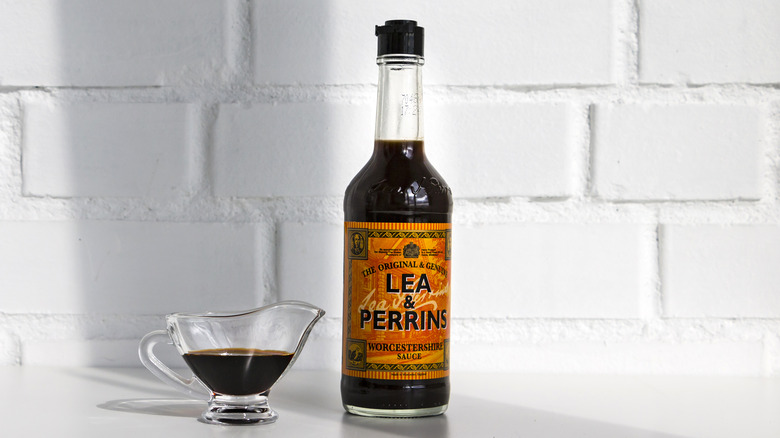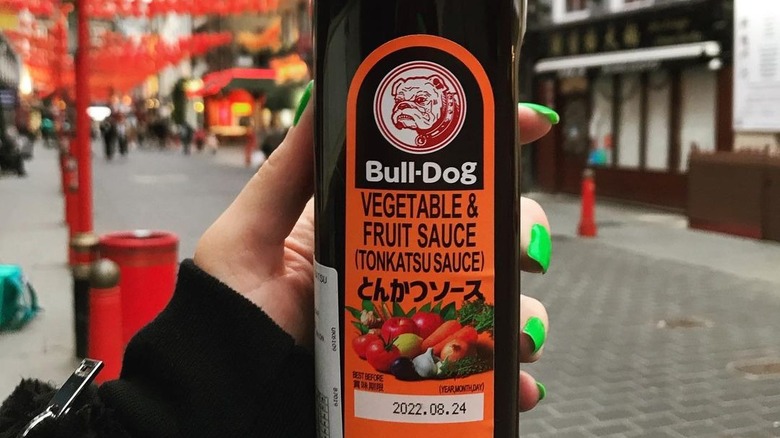If You Like Worcestershire Sauce, You Need To Try This Japanese Classic
One Japanese sauce is so integral to the cuisine, so commonly served with its dishes, that it is often referred to simply as so-su, or "sauce," according to Japanese food blogger Just Hungry. The sweet and savory, thick syrupy, dark brown sauce, the blog explains, is enjoyed with Japanese-style hamburgers, vegetable pancakes called okonomiyaki, and tonkatsu, breaded and deep-fried pork cutlets. While the sauce was created in Japan and is now a staple of the country's cooking, it was inspired by a signature English condiment that is present in many Western pantries today: Worcestershire sauce (via Tokyo Tonkatsu).
Lea & Perrins original Worcestershire sauce was born in Worcester, England, in the 1800's and spread to other continents in the following centuries, the brand's website says. As Western food grew more popular in Japan in the early 1900's, a Japanese food wholesaler called Misawaya decided to create a new version of Worcestershire sauce that would please the Japanese palate (via Tokyo Tonkatsu). They named it Bull-Dog Sauce, and today it's the most popular and easily found brand of Japanese sauce.
What goes into Bull-Dog sauces?
Bull-Dog produces a few different types of sauce, from the Worcestershire-inspired version to "vegetable and fruit" sauces, one semi-sweet and the other suited for tonkatsu (via Tokyo Tonkatsu). While each type of Bull-Dog sauce — and other brands, for that matter — is intended for a specific purpose, Just Hungry says that the sauces are very similar to one another, differing only slightly in how sweet and viscous they are. Most sauces, the blog says, contain some combination of vegetables, fruits, spices, amino acids for umami, sweetener, and caramel color, so there's no real need to buy one sauce for okonomiyaki and another for tonkatsu unless you really want to collect them all.
Feel like making Bull-Dog sauce at home? You can't use Lea & Perrins Worcestershire sauce alone as a substitute. While the English brand does share some of the same sweet and salty qualities as Bull-Dog sauce thanks to sugar and anchovies, it's much more sour and less viscous than the Bull-Dog version, according to Japanese food blogger Just One Cookbook. You can, however, use the blog's recipe to combine Worcestershire sauce with ketchup, oyster sauce, and sugar to create a Japanese-style condiment for fried foods, quick noodle dishes, and more.

